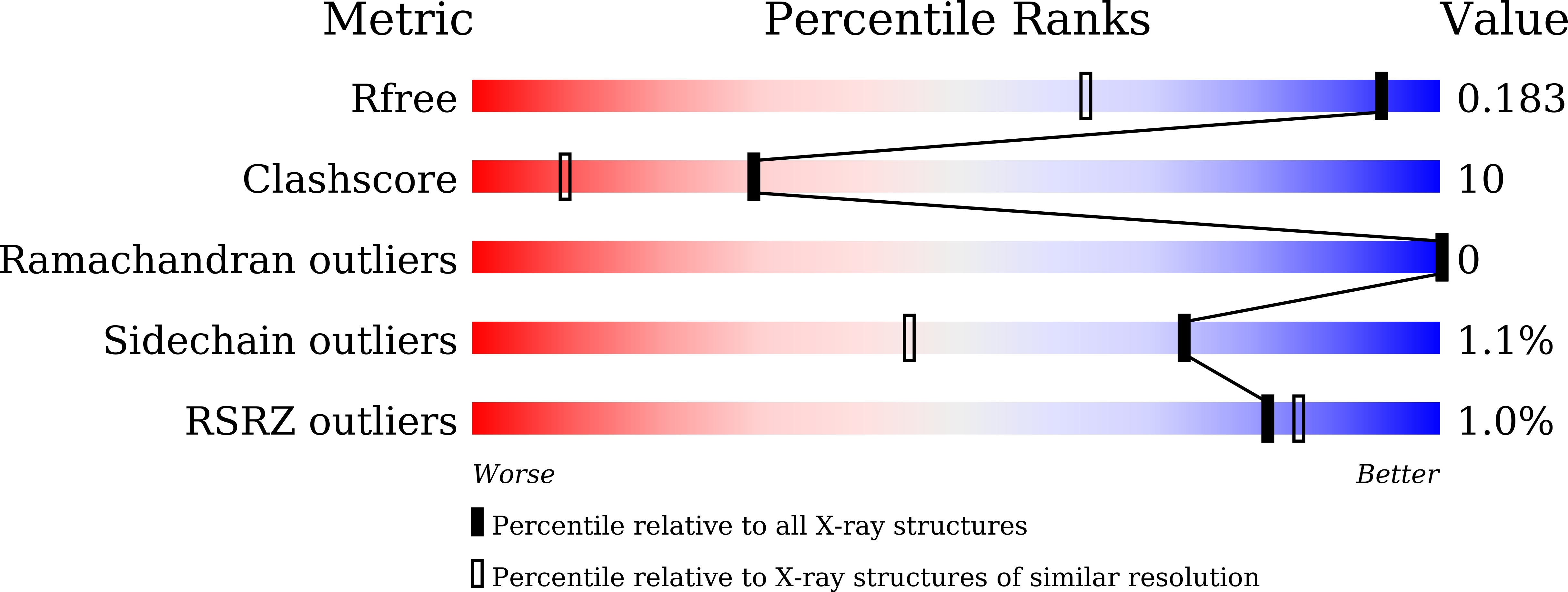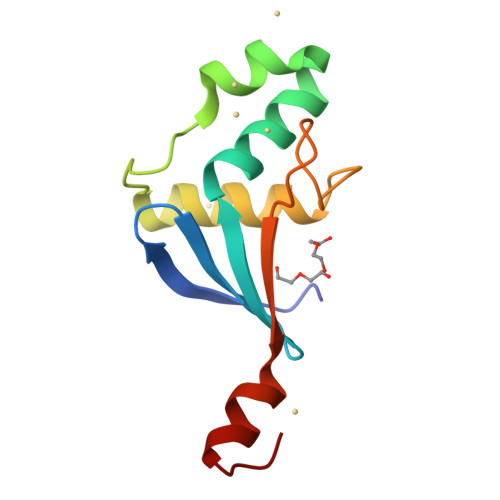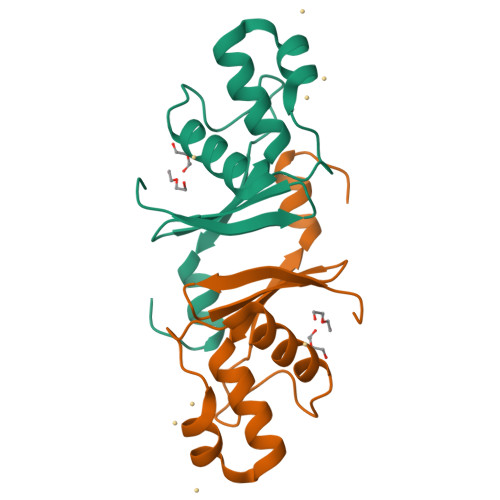Structural Features and Functional Dependency on beta-Clamp Define Distinct Subfamilies of Bacterial Mismatch Repair Endonuclease MutL
Fukui, K., Baba, S., Kumasaka, T., Yano, T.(2016) J Biological Chem 291: 16990-17000
- PubMed: 27369079
- DOI: https://doi.org/10.1074/jbc.M116.739664
- Primary Citation of Related Structures:
5B42 - PubMed Abstract:
In early reactions of DNA mismatch repair, MutS recognizes mismatched bases and activates MutL endonuclease to incise the error-containing strand of the duplex. DNA sliding clamp is responsible for directing the MutL-dependent nicking to the newly synthesized/error-containing strand. In Bacillus subtilis MutL, the β-clamp-interacting motif (β motif) of the C-terminal domain (CTD) is essential for both in vitro direct interaction with β-clamp and in vivo repair activity. A large cluster of negatively charged residues on the B. subtilis MutL CTD prevents nonspecific DNA binding until β clamp interaction neutralizes the negative charge. We found that there are some bacterial phyla whose MutL endonucleases lack the β motif. For example, the region corresponding to the β motif is completely missing in Aquifex aeolicus MutL, and critical amino acid residues in the β motif are not conserved in Thermus thermophilus MutL. We then revealed the 1.35 Å-resolution crystal structure of A. aeolicus MutL CTD, which lacks the β motif but retains the metal-binding site for the endonuclease activity. Importantly, there was no negatively charged cluster on its surface. It was confirmed that CTDs of β motif-lacking MutLs, A. aeolicus MutL and T. thermophilus MutL, efficiently incise DNA even in the absence of β-clamp and that β-clamp shows no detectable enhancing effect on their activity. In contrast, CTD of Streptococcus mutans, a β motif-containing MutL, required β-clamp for the digestion of DNA. We propose that MutL endonucleases are divided into three subfamilies on the basis of their structural features and dependence on β-clamp.
Organizational Affiliation:
From the Department of Biochemistry, Osaka Medical College, 2-7, Daigakumachi, Takatsuki, Osaka 569-8686 and k.fukui@osaka-med.ac.jp.


















